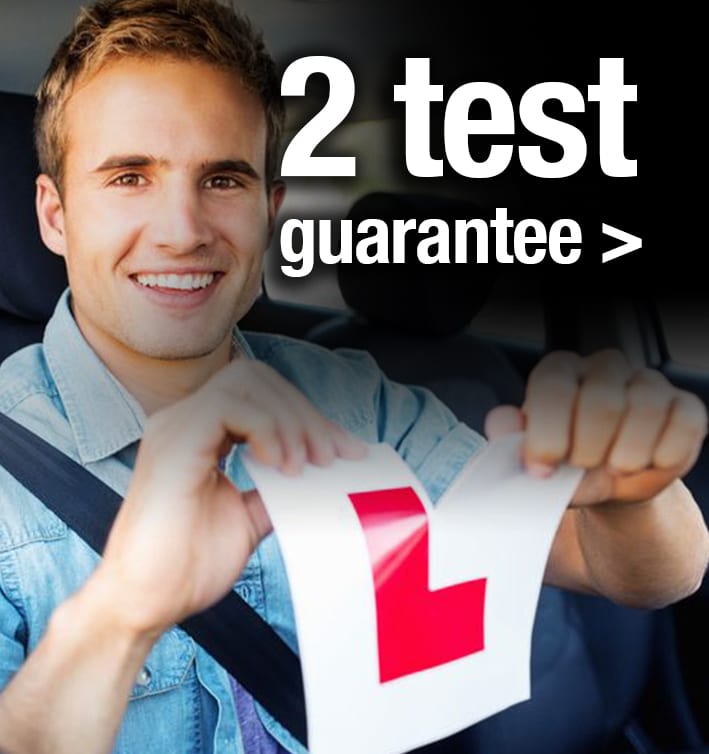Driving Instructors who are registered with the DVSA (Driver and Vehicle Standards Agency), are kept up to date by the DVSA about driving training matters. There are currently 2 “hot” issues that have been raised again in December 2016 which relate to the driving test. This blog from Tom Ingram (Owner of BIG TOM Driving School), expands on the issues recently raised at conference by representatives of the DVSA.
The first is regarding driving test waiting times. The CEO of the DVSA is keen to continue to point out to Driving Instructors that a factor that aggravates the long waiting times for driving tests is the fact that so many candidates are being presented for test, when they really should not have been as they are not ready to pass the test. As such, according to the CEO, this creates an unnecessary backlog due to the need for candidates to then take another test. This stance raises a few issues:
- The fact that the waiting times for driving tests has been getting progressively worse across the UK would tend to suggest that if the CEO is correct in his statement, Driving Instructors have also been getting progressively worse at presenting their pupils to test too soon. I am not aware of any such evidence that corroborates that point. If for instance, there had been an influx of newly qualified Driving Instructors over the last 5 years, then perhaps it could be argued that inexperienced Driving Instructors were responsible for presenting pupils when they were not actually ready. There has not been any such influx, in fact, quite the opposite, the number of Driving Instructors on the register has been in decline for several years.
- When a candidate fails a driving test – as the majority currently do across the UK on their first attempt (and have done for many years), what actually is the CAUSE of that test fail? Because in the absence of knowing why candidates are failing, it seems slightly dangerous territory to start criticizing professional trainers for outcomes that they do not necessarily have an influence on. For instance, what proportion of candidates who fail the driving test on their first attempt were actually perfectly capable (in terms of competence) to pass the test, but failed due to factors relating to nerves, lack of confidence, anxiety of having a different person look at their driving? In other words, how many test fails are actually due to the way the DVSA assess Learner drivers, rather than how Learner drivers are taught? The answer to these questions are not easy to identify, and as such, make it unlikely that making general sweeping statements such as ‘Driving Instructors are taking pupils to test before they are ready’, is in any way measurable.
- The decision of when a pupil goes to test should ideally be a joint decision. A Driving Instructor can have an opinion of a pupil’s ability to drive and their confidence, but that does not necessarily match the thoughts and feelings of the pupil. There can be many reasons for this fact, but a fact it undoubtedly is. By making a statement such as ‘Driving Instructors are taking their pupils to test too soon’, it demonstrates a lack of understanding of this key point. Pupils are humans not robots, the opinion or assessment from a Driving Instructor of how ready a pupil is to go to test is, is not a given as to outcomes. Pupils have many choices relating to the timing of their driving test, who they go to test with, in what car, and to presume that all pupils will respect or agree with the opinion of their Driving Instructor is quite unrealistic and naïve. If the DVSA want to change that fact, and make the decision of the timing of driving tests to be truly in the control of Driving Instructors then they need to change the system/process accordingly.
The second topic relates to the proposed new driving test. It has always been the case since I qualified in the driving training industry in 2009, and even before when I was training, that the driving test is not intended to be THE goal to which a pupil strives towards regarding their training. The philosophy of the DVSA has always been Driving Instructors developing a safe driver for life, rather than a safe driver that can pass the driving test. As such, a key concept of this stance is to ensure that Driving Instructors create a learning programme that is based around the DVSA Driving Standard, as opposed to the assessment criteria of the driving test. Different driving schools embrace this concept to greater and lesser degrees; it is fundamentally why a significant number of candidates who have been trained to pass a driving test then feel inadequate to drive safely within a range of different driving conditions after passing their test. So in essence, driving training methodology is supposed to be centred around the individual needs of the pupil to develop a safe, responsible, capable and confident driver after they have qualified.
What is being suggested now however is that the DVSA have been trialling some changes to the driving test such as these here The reason for this amendment to the driving test, as given by the DVSA is: “The government wants new drivers to be prepared for driving on their own, and not just passing the driving test”. However, there have not been any changes to the Driving Standard. The test results so far in the trials, both for the new proposed test and the “control” current test has resulted in a minimum of 5% increased pass rate compared to the national average. The national average for passing the driving test on the first attempt is in the order of 47% and the national average for passing driving tests (in general) is very similar.
The downside of all this talk relating to the results of this trial, is that it works on the basis that the driving test itself is instrumental in ensuring the quality standard of the training provided to a given pupil. And yet the whole thrust of the above historically from the DVSA is precisely that is NOT its intended purpose. What we do know is that when several hundreds of Driving Instructors volunteer themselves and their pupils’ test results to be party to the trial, the pass rates of both the existing and the new test increase. But the scope and depth of the “curriculum” contained within the Driving Standard has not yet altered, and should it get altered, it will reflect an alteration to the types of manoeuvre to be able to perform. Driving on any class of road, at any time, in any weather is already a pre-requisite of the current standard, as is the use of sat nav.
One thing to consider in all of this is the following. If the proposed driving test was to the same technical standard but had a longer duration than the current one, would it not be logical to expect the pass rate of the longer test to be lower? Instead of 38 minutes in length if it was to take 1 hour or even 2 hours, with the amount of extra driving time that will naturally entail, is it not logical to suggest that the potential for picking up more driving faults HAS to increase accordingly? The only way in which a new driving test that is longer in duration could possibly attract statistically higher pass rates than the current test is:
- The standard of the marking of driving faults is relaxed. We have previously been assured by the DVSA that the standard of assessment of the new test is no higher or lower than the current test
- The quality of the training pre-test is improved.
- The technical competence standard of the test is reduced.
But what we are not being told (yet) is what the difference in pass rates is between both tests in the trial. The two tests in the trial are being performed using Driving Instructors that are of no different standard to the existing pre-requisites from the DVSA – the calibre of the Instructors is no different and they have received no additional training IN ORDER to provide the training for the new test. So in essence, with the same standard of ‘training provider’, providing driving training for the new test that requires no additional training to deliver, one has to wonder what “success” actually looks like in this new trial. Would an increased pass rate for the new driving test equate to a favourable outcome. Rather, would a decreased pass rate for the new driving test equate to a favourable outcome. What is attempting to be achieved is the actual question here; are the DVSA attempting to raise standards of driving training, improve the ‘fitness’ of the assessment process, or help develop a process that creates safer and more confident & competent newly qualified drivers? If the answer to that is “all 3” then I rather suspect they will be actually achieving none of them. To repeat what the organisation itself is saying for the reason for the new driving test: “The government wants new drivers to be prepared for driving on their own, and not just passing the driving test”. It appears to me to be illogical to expect any significant increase in improved training or output if there is not a mandatory adherence to their Driving Standard. For me, this has always been a case of the Driving Standard setting the standards, not the driving test – if the DVSA have concerns about the quality of the current output of newly qualified drivers, their attention would be better placed on altering the system by which Learners are required to cover the syllabus of the Driving Standard, rather than any tinkering around with the assessment phase of the process.
The views presented here in this blog are those of the author only. Questions or comments: Email HERE





